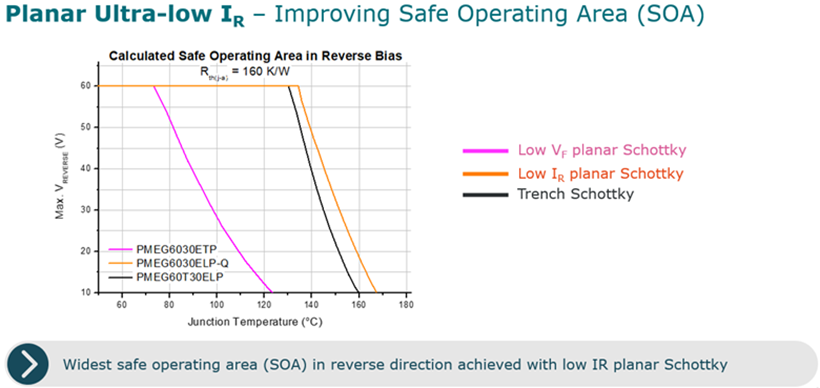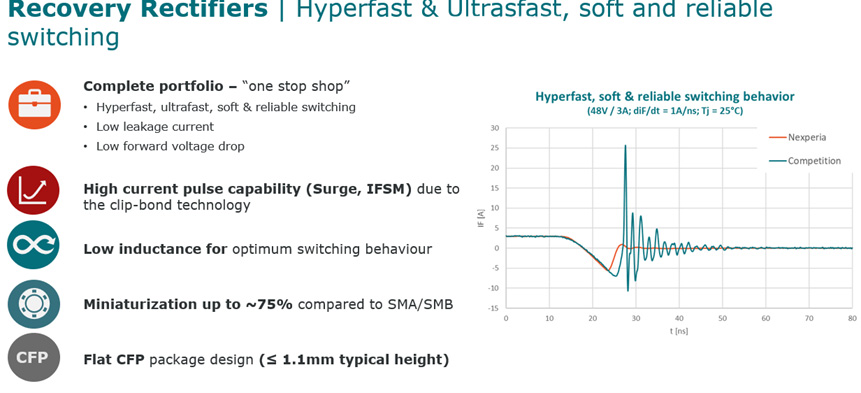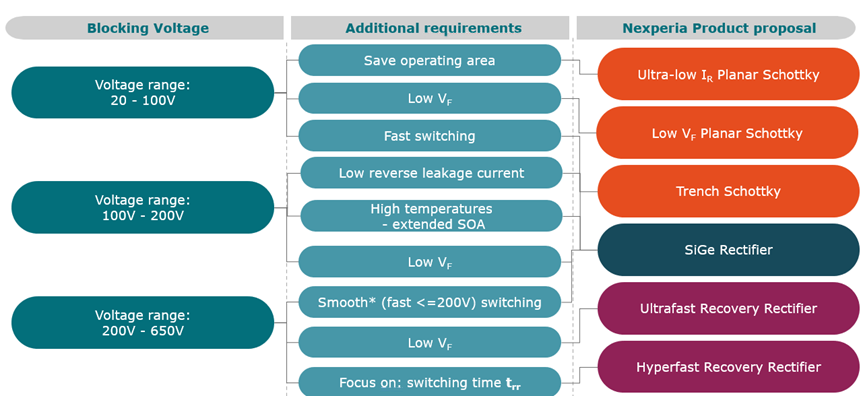When selecting the right power rectifier for your applications how can you meet the challenging demand of efficient and space saving designs? Balancing switching losses, conductions losses, thermal performance and safe operating area is the key challenge.
The different structures of rectifier technologies lead to different characteristics useful for different applications.
Planar Schottky Rectifiers
Schottky rectifiers offer high efficiency due to their very low forward voltage drop during conduction and fast switching. A drawback is their relatively high leakage current leading to reduced temperature stability and limited safe operating area.
Nexperia offers Planar Schottky Rectifiers up to 100V as:
- Low VF Planar Schottkys for reduced conduction losses

- Ultra Low Leakage Planar Schottkys for an improved safe operating area

Trench Schottky Rectifiers
To further push the efficiency of Schottky Rectifiers a trench structure is introduced. This design improves the switching time and decreases the recovery charge as well as the peak reverse current. These effects improve the efficiency of the overall design significantly especially at high switching frequencies >100 kHz.

What is the ideal rectifier for fast switching applications?
Hyperfast and Ultrafast Recovery Rectifiers
Hyperfast recovery rectifiers, in contrast to Schottky rectifiers, incorporate a PN junction to control the electric properties of the device and are typically available at a voltage specification of 200V and above. Dopants are introduced to tune the characteristics to the needs of the application, for example faster switching or lower VF. By nature of the design, these rectifiers are thermally stable up to 175°C.

Power rectifiers | Decision Tree
When is best to select which Power Rectifier for your switching application?





